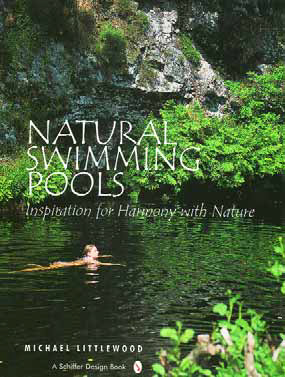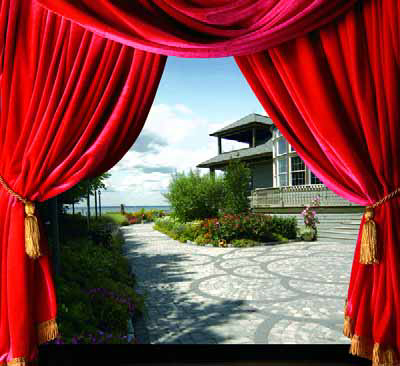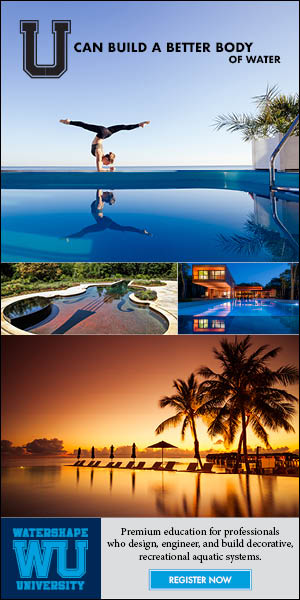WaterShapes
October has always been my favorite month. I was born in October and married not once but twice within the span of its 31 days. My son's birthday is October 11, and where I live in southern California, the weather is as beautiful as it gets straight through: The first hints of winter's chill chase
Sometimes you just know that a client is going to want something special - something nobody else has. I can think of no other entity that better fills that bill than the Walt Disney Co. Justly famed for its remarkable creativity, spirit of innovation and ultra-high standards for design and execution, I knew going in that working with this amazing organization would mean coming to the table with strong ideas, supreme self-confidence and a demonstrated willingness to test boundaries and perform beyond expectations. Our firm, Captured Sea of Sunset Beach, Calif., was founded with those exact qualities in mind and a mission to create fountain systems throughout southern California that are distinctive, unique in concept, superbly engineered and built to last. Through the past eight years, we've been fortunate to tackle several projects for Disney in southern California. In each case, they were looking for watershapes that would delight visitors while enduring the rigors of heavy-duty use and near-constant operation. The call about the fountain featured in this article came in late summer 1999 from Glendale, Calif.-based Walt Disney Imagineering (WDI), the remarkable division of the company responsible for designing its theme parks and attractions. They told us that they were
Sometimes you just know that a client is going to want something special - something nobody else has. I can think of no other entity that better fills that bill than the Walt Disney Co. Justly famed for its remarkable creativity, spirit of innovation and ultra-high standards for design and execution, I knew going in that working with this amazing organization would mean coming to the table with strong ideas, supreme self-confidence and a demonstrated willingness to test boundaries and perform beyond expectations. Our firm, Captured Sea of Sunset Beach, Calif., was founded with those exact qualities in mind and a mission to create fountain systems throughout southern California that are distinctive, unique in concept, superbly engineered and built to last. Through the past eight years, we've been fortunate to tackle several projects for Disney in southern California. In each case, they were looking for watershapes that would delight visitors while enduring the rigors of heavy-duty use and near-constant operation. The call about the fountain featured in this article came in late summer 1999 from Glendale, Calif.-based Walt Disney Imagineering (WDI), the remarkable division of the company responsible for designing its theme parks and attractions. They told us that they were
As milestones go, the project depicted in these pages has been a big one for me - and for lots of other people as well. The grand estate with its outsized home is located in the countryside near Hanover, Pa., a remote setting that offered a set of challenges that has in many ways redefined what is and isn't possible in a whole region when it comes to watershape design, engineering and construction. A full two-and-a-half years in the making (a period broken up, of course, by stretches in which there was no activity on site), this stands as one of
The most famous artists and designers often become known for one particular style or motif. When we see the cubism of Pablo Picasso or the drip paintings of Jackson Pollack, for example, we firmly link those distinctive artistic "moves" with the artists themselves. In some cases, those associations are extremely positive and add to the artist's or designer's mystique and prestige - certainly the case with Picasso and Pollack. For other artists who are less famous, however, an identifiable mode of expression can lead to confinement, predictability and, in some cases, a needless limitation of vision and creative possibilities. Since I began my career in the early 1980s, I've focused on capturing aquatic life forms in mixed-media sculptures to such an extent that my name is associated with the genre - although I'm certainly no Picasso. Indeed, in the years I've been active, there have been so many sculptures, statues and paintings depicting whales, dolphins and fish that the genre I love has become something of a cliché. So many consumers love such images that a vast number of enterprising artists have stepped in to meet the demand. The problem is that so many of these efforts are uninspired and
From the streets of London to the forbidding environs of horror movies, fog has always been capable of stirring our imaginations. It's the stuff clouds are made of and an enduring symbol of mystery, and it's not too surprising that enterprising people would try to figure out how to generate and use this most elemental of atmospheric vapors as a practical tool and distinctive design element. To start our story, let's flash back to 1970, when the first-ever artificial-fog system made its debut at the World's Fair in Osaka, Japan, as part of Pepsi's revolutionary Pavilion of the Clouds. Just a year earlier, my father, cloud expert Tom Mee, had founded Mee Industries to provide instrumentation that was to enable the government to do a better job of studying clouds and airborne pollution. I can only imagine what it was like for him to receive a call from Japanese artist Fujiko Nakaya, who asked him to develop a system that would generate a cloud to would enfold the outside of a 200-foot dome as a key element of her design for the pavilion. Interestingly, Nakaya was the daughter of the man who had pioneered snowmaking technology, and I've always been intrigued that she wanted to make a
Did you know that there's a strong trend toward creating ponds that are made for swimming in Germany and Austria? That revelation came by way of a terrific book I just finished - Natural Swimming Pools: Inspiration for Harmony with Nature by Michael Littlewood (Schiffer Publishing, 2004). Littlewood is an American landscape designer who moved to Europe several years ago and has since become involved in the design and installation of naturalistic watershapes that are a distinct departure from run-of-the-mill concrete pools we encounter in the United States. Indeed, he and scores of other watershapers throughout Europe are setting up vinyl-lined ponds that lack most of what we'd recognize as pool features or equipment, but are deep enough and big enough for swimming and other forms of aquatic exercise. And the simple fact is that their European clients seem inclined to
It often happens that the way people enter a space has everything to do with the way they experience it and come to regard its overall design. This was much on my mind as we concluded our work on the Long Beach Island project I've discussed in my last few "Details." By orchestrating access and movement toward the backyard/pool area, we developed a string of transitions that lend a sense of surprise and delight to those entering a beautifully designed and constructed space that literally seems like a world apart. As discussed in previous columns, the backyard features a
In looking back over several recent projects, I noticed that I've been using one particular genus of plants more frequently than just about any other. Its name probably evokes thoughts of petri dishes and bacterial colonies for most of us, but this plant genus - Pittosporum - has truly held an extremely valuable position in most of my plant palettes in recent years and is one of the most useful of all plant types I use. I find myself pointing them out every time I take clients to a nursery to view and select plants, and it seems I'm always trying to find ways to fit one or more of its many varieties into my planting plans. I treasure them for their great variety in





















